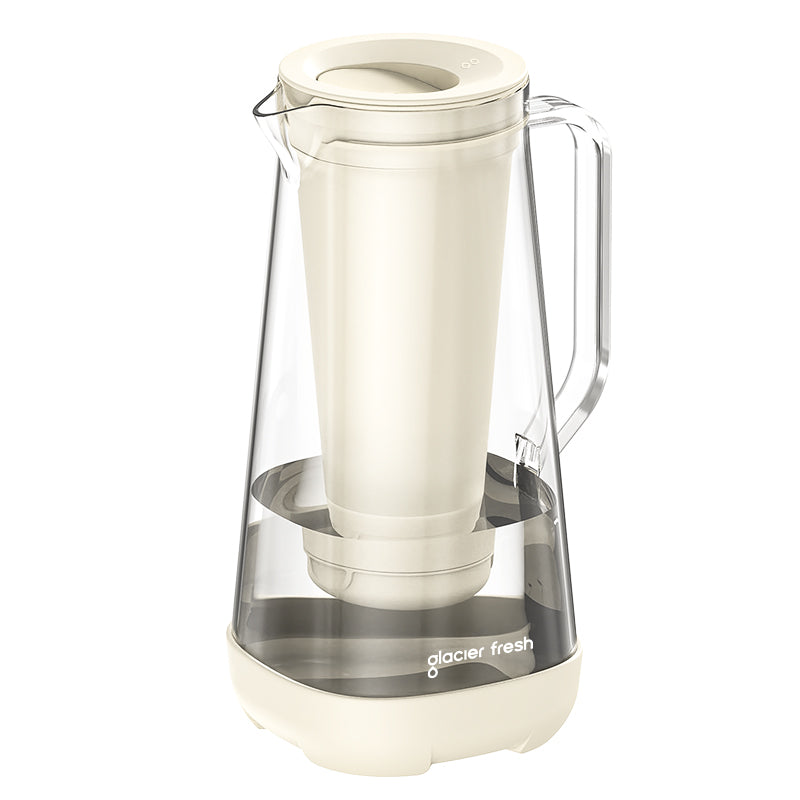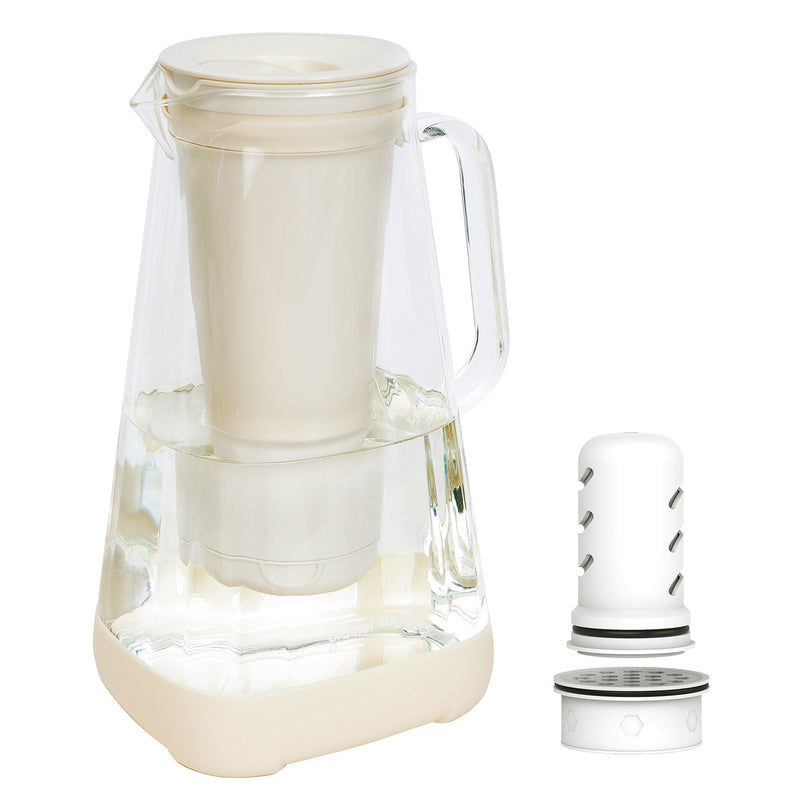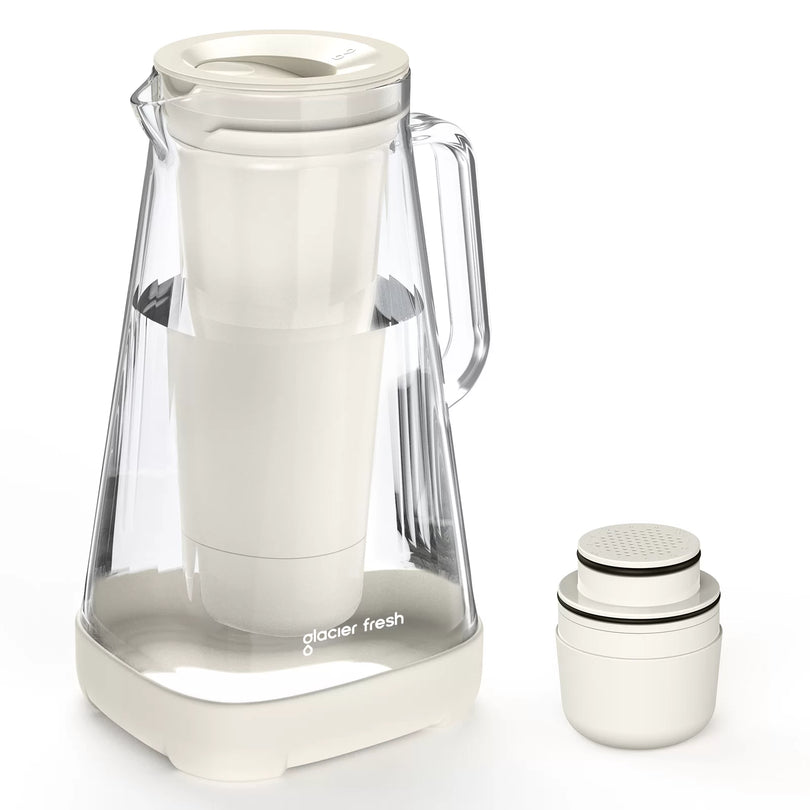Table of Contents:
What are under-sink RO water systems?
How do under-sink RO water systems work?
Benefits of under-sink RO water systems
Disadvantages of under-sink RO water systems
Real-life experience and testimonials
Conclusion
You've likely heard about under-sink reverse osmosis (RO) water systems, but are they worth the investment? On one hand, they provide fresh, filtered water right from your tap, minimizing health risks and reducing plastic waste. However, they have downsides, like the initial setup cost, ongoing maintenance, and potential water wastage. So, is it worth it? Let's explore the pros and cons to help you make an informed decision.
What are under-sink RO water systems?
You've probably heard about reverse osmosis systems, but what exactly are they? RO stands for Reverse Osmosis, a type of water filtration method considered one of the finest available.
These systems are installed under your sink, directly into your home plumbing, providing purified water straight from the tap. The principle behind RO is simple but effective. It forces water through a semi-permeable membrane, which filters out impurities such as lead, chlorine, and nitrates.
All of these can be harmful if consumed in large quantities. Hence, the health benefits of an under-sink RO system are pretty significant. But that's not all. These systems also eliminate bad tastes and odors, providing you with water that's safe and enjoyable to drink. They can even improve the taste of your food and beverages, as pure water often makes a noticeable difference in cooking and brewing.
How do under-sink RO water systems work?
Understanding how under-sink RO water systems work can help you better understand their effectiveness. These systems use advanced filtration technology to enhance water quality at your home's point of use.
- Pre-filtration: First, tap water flows through a pre-filter to remove large contaminants like sediment and chlorine. This step protects the RO membrane from damage.
- Reverse Osmosis: Next, water is forced through the RO membrane. This semi-permeable membrane filters out smaller impurities such as heavy metals, salts, and bacteria.
- Post-filtration: Finally, the water passes through a post-filter to polish it before it's delivered to your faucet, removing any remaining tastes or odors.
The installation process for these systems is typically straightforward. You must connect the system to your cold water line and mount it under your sink. The filtered water is then delivered through a separate faucet. You'll also need to connect the system to your drain line to dispose of the wastewater produced during filtration.
Benefits of under-sink RO water systems
You might wonder why an under-sink RO water system is a worthwhile investment. The answer is simple: it's all about water quality, cost comparison, and the easy installation process.
First, reverse osmosis systems intensely purify water, reducing impurities and harmful substances. You're left with water that's not only safer to drink but also tastes better. The quality is unmatched compared to bottled water or water from filtration pitchers.
Next, let's talk cost. Yes, there's an initial investment involved in buying and installing an RO system. However, you'll likely save money in the long run compared to constantly buying bottled water or frequently replacing filters in pitcher systems.
The installation process might seem daunting, but it's simpler than you'd think. Many RO systems come with clear instructions and require minimal tools, meaning you can do it yourself without hiring a professional.

Disadvantages of under-sink RO water systems
Despite the undeniable benefits of under-sink RO water systems, they have drawbacks. You may face installation challenges, especially if you're not a seasoned DIYer. These systems need proper installation to function correctly, and getting it wrong may lead to leaks or even system damage.
Maintenance costs can also add up. Under-sink RO systems require regular filter changes, which can significantly dent your wallet over time. Water waste is another concern. Under-sink RO systems can waste 2-3 gallons for every gallon of purified water. This isn't good for the environment and can increase your water bill. To help you visualize these points, here's a table summarizing the key disadvantages:

Real-life experience and testimonials
User testimonials paint a vivid picture of under-sink RO water systems in action. Personal stories of individuals who've made the switch often mention their water's improved taste and purity. You'll hear tales of coffee and tea that taste better, clearer ice cubes, and a notable reduction in scale buildup on kitchen appliances.
Plenty of user feedback supports the benefits of RO systems. People frequently comment on the convenience of having purified water on tap, which saves them from buying bottled water. They also appreciate the peace of mind knowing their water is contaminant-free.
However, testimonials aren't purely positive. Some individuals express concerns over the complexity of installation and the ongoing cost of filter replacements. They mention monitoring the system regularly to ensure it's working properly.
Expert opinions often agree with user feedback. Many experts endorse the effectiveness of RO systems in purifying water but caution about potential drawbacks. They recommend considering your needs and circumstances before investing in an under-sink RO system.
Conclusion
So, are under-sink RO systems worth it? They offer clean, great-tasting water at your fingertips and help reduce plastic waste. But you'll need to consider the initial cost, ongoing maintenance, and possible water wastage. It's essential to weigh these pros and cons against your budget, lifestyle, and environmental concerns. Ultimately, the decision is yours. Investing in your health and the planet's well-being often pays off in the long run. Visit Glacier Fresh to find more water filtration solutions.










